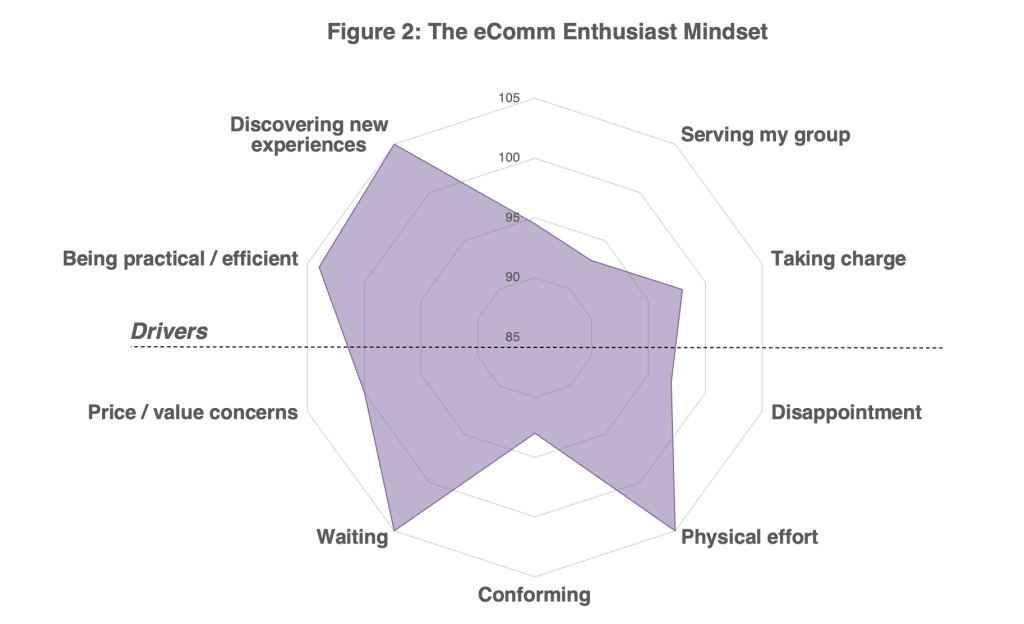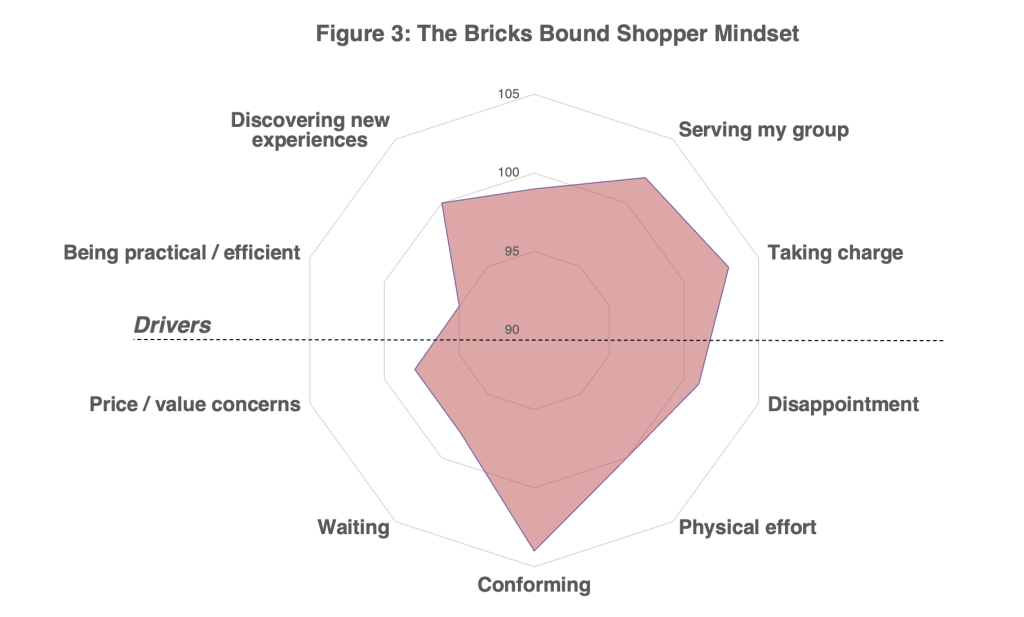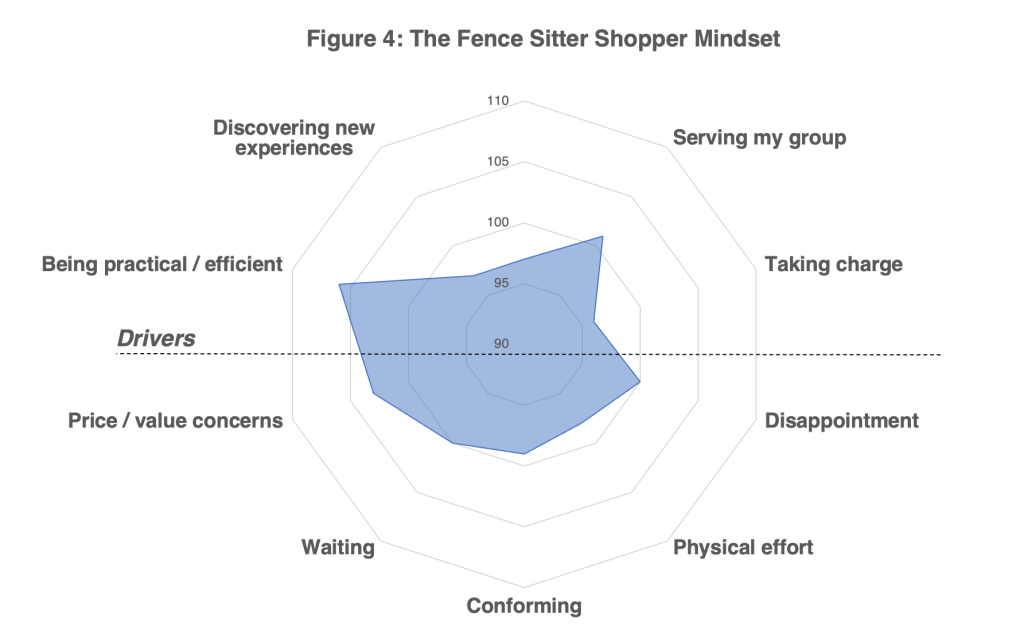by Mary Mathes & Hunter Thurman
This article originally appeared in Quirks
Activate and motivate
The buzzword “omni-channel” abounds in every facet of insights and marketing, from media headlines to market research and strategy briefs. And while the concept is foundational to successful activation, few internal teams can articulate a crisp definition of the word, much less formulate a linear plan for real-world success. But there is a formula and it relies on diagnosing consumer and shopper perceptions (after all, perception is reality).
For some time now we’ve consistently heard two questions from everyone from Wall Street analysts to retail strategists to brand business leaders:
- How do we think about – much less improve – our omni-channel experience?
- And how can we manage inflationary pressures without resorting to a race to the bottom?
- Herein lies the symbiotic nature of omni-activation: the unlock for these two dilemmas relies upon improving the consumer experience in omni-channel in order to free your brand from having to compete on price alone.
Let’s start with the definition of omni-channel, which is: the touchpoints throughout daily life in which a consumer can make a purchase decision and act upon it. The element of “throughout daily life” is important, as the omni-channel continues to fragment and complicate. In terms of “ways to get things,” just look at the options a consumer has right now:
- in a store, regular checkout
- in a store, scan-to-pay with your phone
- ordering for next-day delivery (i.e., Amazon)
- ordering for same-day pickup (i.e., Walmart, Kroger, etc.)
- ordering for same-day home delivery (i.e., Walmart, Kroger, Amazon Fresh, etc.)
- ordering from an app for delivery (i.e., GoPuff, DoorDash, etc.)
- ordering from a fast-food restaurant for pickup
- and so on…
To win across omni-channel, brands and retailers must understand how to improve the experience for their target shoppers where and how they choose to shop. Digital commerce is certainly important to some but brick-and-mortar stores remain significant to many. One consumer’s reason for preferring to shop online is different from another’s preference for in-store.
Most importantly, shoppers across all breeds of hybrid commerce are motivated – and hindered – by far more than mere price considerations.
Using a familiar context – shopping for food and beverage – we can explore the factors that drive, and limit, shopper behavior. Pulling from a proprietary, neuroscience-backed database comprised of gen-pop U.S. consumers, we find there are three primary mind-sets when it comes to food and beverage shopping:
Bricks Bound – these consumers are loyal to brick-and-mortar and represent 48% of U.S. shoppers.
eComm Enthusiasts – these shoppers like buying food via digital means. While they’ll still shop in brick-and-mortar, they prefer digital. This group comprises 20% of shoppers.
Fence Sitters – these shoppers are undecided about eComm vs. in-store. They make up 32% of shoppers and can be persuaded to either means of shopping.
In addition to their preferred form of shopping, each of these groups demonstrate a unique psychology when it comes to the criteria they use in deciding what to buy and where and how to buy it.

What does the indexing chart in Figure 1 reveal? Let’s break down what drives and hinders each mind-set at the foundational, psychological level.

We’ll begin with the 20% who are eComm Enthusiasts when shopping for food and beverage (Figure 2). These shoppers are driven to explore and discover new things, as they are constantly seeking novel life experiences and better ways of doing things. On the barriers side, they don’t want to put in too much effort to get what they need and they don’t like waiting. But this is not merely convenience or speed; they’re pursuing new discoveries and eComm lets them explore efficiently, in ways that fit their everyday lives.
Notice, they are NOT particularly hindered by price. While actual price will always be a factor, the more influential barriers to their decision-making are the time and effort required for their preferred style of shopping.
A good eComm shopping experience for this mind-set is one that empowers them to discover and explore. The customer experience should be more visual and less verbal, prioritizing images and video over text-based descriptions. Product-detail pages should not just tell them what the product is but rather what it does for them – and how it FEELS. What will it enable them to do? How will it look, taste, smell or even sound? Digital activation can make huge strides in triggering the experience for them to pay attention and drive purchase decisions.
Now, for contrast, let’s look more closely at what drives and hinders the nearly half of shoppers who are Bricks Bound (Figure 3).

Bricks Bound shoppers want to take the lead and be in charge when grocery shopping to do right by their household. They also over-express social barriers: They don’t like feeling pressured to conform (such as dealing with other people or being pressured to shop online, use an app or loyalty program, etc.). Again, this group is LEAST hindered by price considerations.
A good in-store consumer experience is one that helps them take control of their shopping and feel like they’ve won; things like exclusive benefits, products or promos other shoppers don’t get. Gaining access to resources and experiences that others can’t have is far more compelling in driving fast cognition and purchase with this mind-set than price promotions.
This group also likes to follow their gut: They want products that will satisfy their cravings and desires. Similar to the eComm Enthusiasts, imagery over text is important to grab their attention. Realistic images that feel tangible (not illustrations or iconography) are very effective.
Packaging and displays that convey high-sensory, fun experiences and products that are intense and unapologetically bold in both formulation and on-pack communication will stand out to the Bricks Bound mind-set. Their decision doesn’t need to make sense to them; they’re following their gut. Standing out at-shelf is key and can be achieved via design elements such as: color palettes featuring reds, oranges and blacks to capture and engage attention; using or implying motion within imagery (bubbling, spraying, dropping, melting, etc.); high-contrast colors and/or depth-of-field. These are all ways to make these shoppers’ brains take notice.

Lastly, roughly one-third of shoppers are on the fence about in-store vs. online (Figure 4). These shoppers want to figure out the most efficient, practical way to get food and beverage; sometimes that might be in-store, sometimes it might be online. This is the only group that is most hindered by pricing considerations and in their case, it’s not price itself that is the problem. Rather, they are bothered by what they perceive as unfair or hidden costs.
A good experience for the Fence Sitter will be one that provides the data they need to make an informed choice; brands must empower them to decide. Clear, transparent, verbal pricing information that eliminates the need to comparison shop or worry they might get a better deal elsewhere will also be persuasive with this mind-set – think side-by-side tables and information to help them make informed, rational decisions.
Mental “neighborhoods’:

Shopper psychology goes beyond how someone prefers to buy food and beverage, to reveal patterns in where they shop; the retailers that consumers perceive to best align with their ambitions and decision-making criteria. Shoppers perceive mental “neighborhoods” in which categories, brands and retailers reside (Figure 5). This perception speaks volumes as to the mental jobs a given channel or retailer is perceived to serve in the hearts and minds of your target audience.
The eComm Enthusiast neighborhood
Target stores, the various drug stores and dollar stores are most aligned with the exploratory psychology of eComm Enthusiasts, followed by Amazon Fresh. While Amazon Fresh makes sense on a practical level, it’s missing the exploration, excitement and discovery of the other three channels.
Drug and dollar, on the other hand, are typically almost pure brick-and-mortar shopping channels. So why the alignment with digital shoppers? What does it mean for strategy and path-to-purchase and how can a channel like dollar be poised for dramatic growth?
This psychology-based view is a great example of how insights can get beyond what is to what could be. While dollar and drug (and largely Target, from the food and beverage perspective) are predominantly bricks-based channels, shoppers perceive that they serve the exploratory mind-set most aligned with eComm shopping.
For one thing, this is where hybrid commerce can light innovative paths forward, if retailers and manufacturers in these channels were to provide, for example, engaging ways that fuel and enable discovery and exploration. The phone is one obvious avenue for teams to explore. For example:
- What if shopping in a Dollar General store could be an interactive experience where shoppers use their phone to make new discoveries, aisle-to-aisle, a la Pokémon Go?
- What if the Target app allowed shoppers to opt-in for a once-per-visit push message that provides an exciting discovery, like a digital slot machine as they shop the physical store?
- What if Walgreens provided a gamified preview in its digital content of unique upcoming discoveries in the seasonal section central to each physical store to pique shopper intrigue and drive visits?
The Bricks Bound neighborhood
The Bricks Bound mind-set is currently most aligned with Walmart, convenience stores and Amazon Fresh. How is it possible that the first name in eComm is aligned with the same consumer decision-making criteria that guides the die-hard brick-and-mortar crowd? What does it mean for Walmart, and other omni-channel retailers, and how can they adjust strategy to win?
Amazon Fresh is an interesting case in that it is seen as serving both highly impulsive shopping and highly rational decision-making. The Bricks Bound shopper doesn’t often shop online but when they do, Amazon Fresh serves their need to get what they want and avoid having to deal with people.
Walmart, on the other hand, is perceived to provide shoppers with advantages other shoppers won’t get. And recall, this “exclusivity” is more compelling that merely lower prices. While there are certainly a range of unique activational and promotional opportunities this insight reveals, simply claiming credit should be the first step for Walmart and manufacturers. Something along the lines of “relax, you’re with Walmart” would strike a chord for this shopper mind-set and instill the sense of service and belonging central to it.
The Fence Sitter neighborhood
Keeping with the neighborhood analogy, Fence Sitters are “open to relocating” to other areas. While they shop broadly, their practical drive is most aligned with Amazon Fresh, drug and club stores. Like the Bricks Bound contingent, when they do shop online, Amazon Fresh serves their desire to get what they need efficiently and at a good value. Club and drug are seen to serve up reasonably efficient shopping needs across categories.
Clarifies the chaos
 The neuroscience of consumer decision-making clarifies the often-mysterious chaos of omni-channel and offers three key lessons to carry forward:
The neuroscience of consumer decision-making clarifies the often-mysterious chaos of omni-channel and offers three key lessons to carry forward:
Lesson 1: Omni-channel activation should NOT aspire to a consistent experience. Shoppers use different means of shopping (eComm vs. bricks-and-mortar) with very different decision-making lenses. Therefore, digital CX should not seek to simply replicate the bricks experience.
Lesson 2: Only a third of consumers represent a true omni-shopper mindset. These Fence Sitters are the more rationally minded shopper audience, which is where most strategy and activation begins and ends, assuming that shoppers behave based only on practical motivations and constraints. While this is an interesting group, the majority of the consumer audience is driven and hindered by more emotional factors.
Lesson 3: Experience overrides price. Manufacturers and retailers can – and must – avoid the race to the bottom of price promotion. If shoppers are provided with low prices as their core metric, they’ll adopt it as their decision-making criterion. However, brands and retailers that tap the TRUE drivers and barriers to purchase decision-making will enjoy far more compelling (not to mention margin-accretive) business results.





